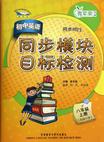初中英语同步模块目标检测(8年级下)郑玉林作者简介、书籍目录、内容摘要、编辑推荐

《青苹果教辅·同步时间:初中英语同步模块目标检测(8年级上)(衔接小学)(新标准)》具有以下特点: 一、语言地道准确:选材多为鲜活的英文原创材料。听力部分由英国专家专门录制。 二、与课堂教学同步:紧扣新课标,配合教材进度,可用作课堂同步练习。 三、配合测试考试:结合各地中考以及国际多种测试标准设计练习,实用性强。 四、题型活泼多样:在题型的选择上参考了各地的中考题型。题目注重营造语境,内容活泼,配以插图,趣味性强。 五、全面训练提高:听、说、读、写四方面技能定期、定量训练,注重基础,全面提高。
书籍目录
Module 1 A卷Module 1 B卷Module 2 A卷Module 2 B卷Module 3 A卷Module 3 B卷Module 4 A卷Module 4 B卷Module 5 A卷Module 5 B卷Module 6 A卷Module 6 B卷期中检测卷Module 7 A卷Module 7 B卷Module 8 A卷Module 8 B卷Module 9 A卷Module 9 B卷Module 10 A卷Module 10 B卷Module 11 A卷Module 11 B卷Module 12 A卷Module 12 B卷期末检测卷听力原文及答案
章节摘录
Weather changes when the temperature and the amount of water in the atmosphere change. We can see and feel water coming from the atmosphere when we have rain. But the water must somehow get back to the atmosphere. Meteorologists call this the water cycle. There are many stages in the water cycle. Rain falls when water vapour in clouds condenses (凝结). Drops of water form and fall to the ground. The water soaks into the ground and feeds streams and rivers. A lot of rain falls into the sea. The heat of the sun evaporates some of the water in the ground and in the rivers, lakes, and the sea. It changes the liquid water into the water vapour. The vapour rises onto the air. Water vapour is normally invisible. On a very damp or humid day, however, you can sometimes see water vapour rising from a puddle or pond in a mist above the water. Water vapour also gets into the air from living things. Trees and other plants take in water through their roots and give off water vapour from their leaves. People and land animals drink water and breathe out water vapour. In all these ways the water retums to the air. There it gathers to form clouds and condenses to form rain. The rain falls to earth, and the cycle starts again. It continues even if snow or hail fall instead because both eventually melt to form water. The amount of water vapour in the air depends on the temperature. The air is more moist in the tropics than in the cold polar regions. 49.What is the main idea of the passage? A. Water cycle. B. Water vapour. C. How rain forms. D. Water, vapour, rain. 50. How many ways of the water returning to the air are discussed in the text? A. Two. B.Three. C. Four. D. Five. 51. Whether water vapour can be seen or not depends on _____. A. how much water is evaporated B. how good your eyes are C. in which way water is evaporated D. climate or weather 52. From the passage we get to know______. A. there is more water vapour in the air in the tropics than in cold polarregions B. there is more water vapour in the air in cold polar region than in the tropics C. it gets more rain in the tropics than in cold polarregions because there is less vapour D. the amount of water vapour in the air depends on how often it rains C Every 30 seconds there is an earthquake. But don worry because most are so weak that they cannot be felt. Only a few big ones hurt people. Many earthquakes happened in China, such as the big one in Sichuan in 2008. Thousands of people died in it. So its important to know what to do when one hits. Here are some tips on how to stay safe in an earthquake. 1. If you are indoors during an earthquake, hide (躲藏) under a desk. Stay away from windows and anything that could fall on you. 2. If you are outdoors, move to a clear place. Try to be away from trees, signs, buildings and streetlights. These could fall on you. 3. If you are in a shop and far from the door, don try to run outside and rush for exits. Everyone will be doing that and youll find it hard getting out. Don get into a lift during an earthquake. Just hide under some strong cover near you. ……
